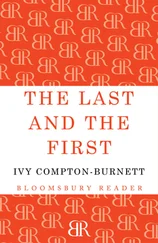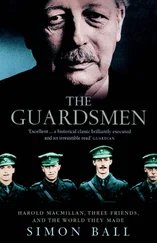So Simmons wrote to Dr Herman Goldstine, a researcher then at the maths and science hothouse, the Institute for Advanced Study in Princeton, asking if Thompson and Standingford might come and see him. During the war Goldstine had been the US army liaison officer attached to the Moore School of Engineering in Philadelphia, where the ‘electronic brain’ – or to give it its proper name, the Electronic Numerical Integrator and Computer, ENIAC – had been developed for the US Army Ballistics Research Laboratory. He replied that the two men would be welcome to visit him. In the spring of 1947 (a spring all the more welcome in that it followed one of the worst British winters in living memory), Thompson and Standingford boarded a ship for the five-day crossing of the Atlantic.
It brought them to a land of plenty, even of excess: abundant food, central heating, large, gas-guzzling automobiles, all in stark contrast to the privations of bombed-out, rationed Britain. But they were far from dazzled by much of what they saw. In the course of a whirlwind programme of visits to office equipment suppliers and large organisations, they found nothing to match the systems that had been put in place at Lyons by Simmons and his team. They were astonished at the readiness of American managers to have their problems diagnosed by office machinery salesmen, whose remedies inevitably involved buying more of their equipment. Few seemed to have paid more than lip-service to the ideal of scientific management, apparently happy to believe that efficiency could be bought off the shelf from whichever salesman produced the most convincing argument or dazzling demonstration. For example, most companies were using IBM’s punched-card installations, but few had seriously evaluated their cost-effectiveness.
Even in the layout of office buildings, Thompson and Standingford felt that the new Lyons administrative building at Cadby Hall, Elms House, meticulously designed under John Simmons’s direction according to the principles of scientific management, was superior to any American organisation’s offices. While they were in Washington DC they took in the War Department’s Pentagon office building, completed only three years before at a cost of $80 million. Their guide reeled off the statistics: 30,000 workers, more than 6.5 million square feet of floor space on five floors, and 17½ miles of corridors. The two men left, laughing and shaking their heads incredulously at the time that would be wasted in getting from one part of the building to another.
At last they headed for Princeton and their meeting with Herman Goldstine – a meeting that made the whole trip worthwhile.
Herman Goldstine was the godfather of ENIAC, the ‘electronic brain’ that had caused such a fever of press excitement and had stimulated Raymond Thompson and Oliver Standingford to explore the possibilities of electronic computing. Having gained a PhD in mathematics from the University of Chicago, Goldstine joined the army when the United States entered the war. In 1942 he found himself assigned to the army’s Ballistics Research Laboratory at the Aberdeen Proving Ground in Maryland, with the rank of lieutenant. In his crisp uniform he looked every inch the military man, but he never truly left academic life behind; always hungry for ideas, when he found a good one he would do everything possible to make sure it had a chance to flourish.
One of his tasks was to liaise with the Moore School of Engineering, not far away in Philadelphia. Here, teams of women – ‘human computors’ – were being trained to calculate firing tables for artillery using mechanical desk calculators. With ordnance capable of firing along parabolic trajectories over a range of up to a mile, it was impossible for heavy gunners to take accurate aim by eye. The tables told the gunners how high to aim their weapons given a target at a certain range, calculated on the basis of the weight of the shell, its velocity on leaving the muzzle, and other variables such as the wind speed and direction, and the air temperature and density. A typical trajectory required 750 multiplications, and a typical firing table about 3,000 trajectories. Goldstine was desperate for an alternative to these human computers, whose work was time-consuming and vulnerable to error.
He found what he was looking for in a proposal to build an ‘electronic computor’ ( sic ) containing 5,000 valves, put forward in 1942 by John Mauchly, a physicist trained for war-related work in electronics at the Moore School. The army refused to take the proposal seriously until Goldstine took up Mauchly’s cause in the spring of 1943 and, through careful diplomacy and a persuasive manner, won from his superiors funding for an even larger revised version. Mauchly was not a great salesman for his own ideas, but was one of very few people in the world at that time who grasped the potential of electronics in computing. Before the war he had worked on the design of a (non-electronic) machine to automate numerical methods of weather forecasting. Through giving a talk on this work he had met John Atanasoff, a professor at Iowa State College, who invited him to see his own prototype computer. It was an electronic adder – properly a calculator rather than a computer – with a modest 300 valves, which Atanasoff had built with his graduate student Clifford Berry between 1939 and 1942.
Mauchly had spent five days discussing it, although he later denied that he had learned anything from Atanasoff. The work had received virtually no recognition at the time, and never advanced beyond a working prototype. But the priority of the little Atanasoff-Berry Computer (ABC) was established years later in a successful bid to deny patents on aspects of the ENIAC design to the Moore School team. The question ‘who invented the computer?’ still rages on internet sites and in a succession of publications, and probably does not have a clear answer. Credit for being the first to build a valve-based prototype calculating machine should probably be shared between Atanasoff and Berry, and Konrad Zuse and Helmut Schreyer, who built an electronic demonstration model at the Technical University in Berlin in 1938.
Whatever it owed to his encounter with John Atanasoff, John Mauchly’s proposal exceeded anything previously seen in its scope and ambition. ENIAC, conceived by Mauchly but brought to life by teams of engineers working sixteen-hour days under the direction of the gifted Moore School engineer Presper Eckert, was a monster. As eventually completed in 1945, it was 2.5 metres high and nearly 50 metres long, its racks of valves, cables and other components arranged in a U-shape around the walls of a large room. It weighed over 30 tons, incorporated almost 18,000 valves, and cost the army $800,000. When it was working, ENIAC could perform 14 10-digit multiplications a second – 500 times faster than the best of the female ‘computors’ with their mechanical machines.
Its reliability, however, was in inverse proportion to its size: the only certain thing about its performance was that it would break down at least once a day. Valves, like light bulbs, have a limited life, and losing just one out of the 18,000 could ruin a calculation. More serious shortcomings were built into its design. Its builders could have cut the number of valves by over a third if they had considered representing the data in the machine in binary code.
Human calculators, having ten fingers, find it easiest to do arithmetic using decimal numbers. For computers, however, it makes much more sense to use the binary system. Binary code resembles Morse code in that it has only two symbols, usually written as o and 1. Any number can be converted into its unique binary equivalent – a string of os and 1S in which the value of each place is twice the value of its right-hand neighbour, rather than ten times as much as in the decimal system:
Читать дальше












